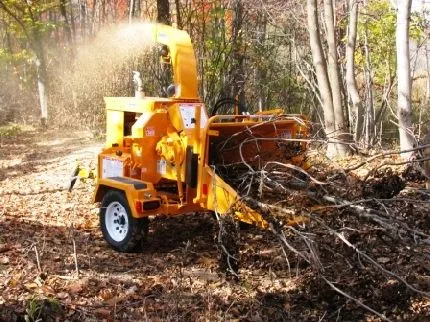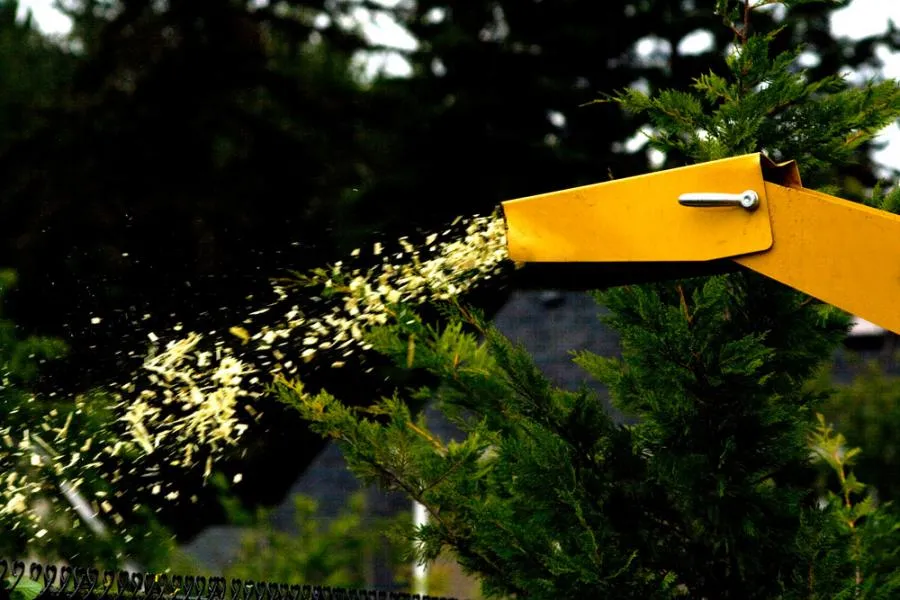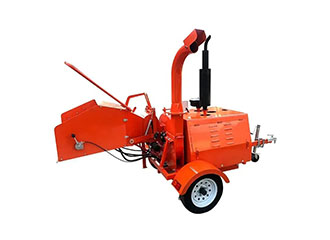Avoid your inquiry is delay response, please enter your WhatsApp/Skype along with the message, so we can contact you at the very first time.
We will reply you within 24 hours. If for urgent case, please add WhatsApp/WeChat: +8613791936882 ,. Or call +86-18678911083 directly.
Tired of dealing with huge piles of branches and garden debris?
A wood chipper can help you turn bulky yard waste into manageable chips, saving time and reducing waste—perfect for any landscaping or garden maintenance job.

Over the years, I’ve worked with garden maintenance teams and landscapers. One tool they all depend on is the wood chipper. It’s an absolute game-changer for quickly clearing branches, twigs, and other yard debris. Let’s dive into how to choose the right one, what they can handle, and how to keep them working efficiently.
The right wood chipper can save you time and effort, but the wrong one can cause frustration.
When choosing a wood chipper, consider factors like engine power, chipper capacity, and the material you need to handle.
Picking the right wood chipper depends on your needs, the amount of debris you need to chip, and how often you plan to use it. Here’s what I suggest:
If you’re dealing with heavy, thick branches, you’ll need a powerful engine. Look for wood chippers with at least 5 to 15 horsepower (HP) for residential use. For larger, commercial-sized jobs, you may need a machine with 20+ HP. The higher the horsepower, the larger and tougher the material it can handle.
Look for chippers with either a drum or disc blade system. Drum chippers are better for handling larger branches, while disc chippers are quicker and better for smaller debris. If you need to process a lot of material quickly, choose a disc chipper.
Check the hopper size to ensure it can accommodate the size of branches you typically chip. Feed mechanisms also vary—some chippers have manual feed systems, while others feature automatic feeding, which can make your job much easier.
| Feature | What to Look For |
|---|---|
| Engine Power | 5–15 HP for residential use, 20+ HP for larger jobs |
| Blade Type | Drum for large branches, disc for speed |
| Feed Mechanism | Automatic feed for ease of use |
| Hopper Size | Choose based on the size of material you need to chip |
I always recommend looking at the material you plan to chip and the size of your typical projects. A wood chipper is an investment that should match your needs, whether for occasional home use or daily professional jobs.
Not all chippers are created equal when it comes to handling thick branches.
A wood chipper can handle branches up to 6 inches thick, but larger models may cut branches up to 12 inches thick.

The size of the branch you can feed into the chipper depends on the model. Smaller chippers are typically limited to branches no thicker than 2–4 inches, while more powerful commercial models can handle 6 inches or more.
Most home-use chippers can easily cut branches up to 4 inches thick. These are usually smaller, lighter machines that are ideal for routine yard work.
For those working on larger properties or commercial landscaping, a chipper with a capacity of 6 inches can tackle the thicker branches, logs, and wood debris often encountered.
The heavy-duty models, which are often used for forestry work or large-scale garden maintenance, can cut logs up to 12 inches in diameter. These are high-powered machines that are built to handle the toughest debris.
| Chipper Type | Max Cutting Diameter | Best For |
|---|---|---|
| Residential | Up to 4 inches | Routine yard maintenance |
| Commercial | Up to 6 inches | Landscaping, medium jobs |
| Heavy-Duty | Up to 12 inches | Large logs, heavy work |
It’s important to match your chipper’s capacity with the size of the branches you need to cut. Trying to force larger branches into a small chipper can damage the blades and slow down the process.
A dull chipper blade is a major headache—it can slow you down and increase your workload.
Yes, you need to sharpen wood chipper blades regularly to maintain performance. Dull blades will struggle to cut effectively, leading to more strain on the motor.

Sharpening wood chipper blades
Wood chippers are built to last, but like any tool, they require maintenance. Sharpening the blades is one of the most critical tasks to keep them running smoothly.
The frequency depends on how often you use the chipper and the type of material you’re chipping. If you’re chipping softwood or dry branches, you might only need to sharpen the blades every 20–30 hours of use. However, if you’re working with tougher material, such as hardwood or wet branches, sharpening may be necessary more frequently.
Sharpening chipper blades requires precision. Some people hire a professional, while others prefer to do it themselves. You can use a bench grinder, but ensure the angle of the blade is maintained. Always wear protective gloves and goggles when sharpening.
Eventually, blades will wear out and need to be replaced. If the chips become rough, the engine strains, or the feed process slows down, it’s likely time for new blades.
| Maintenance Task | How Often | Notes |
|---|---|---|
| Sharpening Blades | Every 20–30 hours of use | More frequently for hardwood |
| Replacing Blades | After prolonged use or damage | Always use manufacturer-recommended blades |
By keeping your chipper blades sharp and replacing them as needed, you’ll maintain efficiency and avoid costly repairs. It’s a small investment of time that pays off in the long run.
A wood chipper is a must-have for any serious landscaper or garden maintenance1 pro. By choosing the right model, understanding its capacity, and maintaining its blades, you’ll make yard work easier and more efficient.